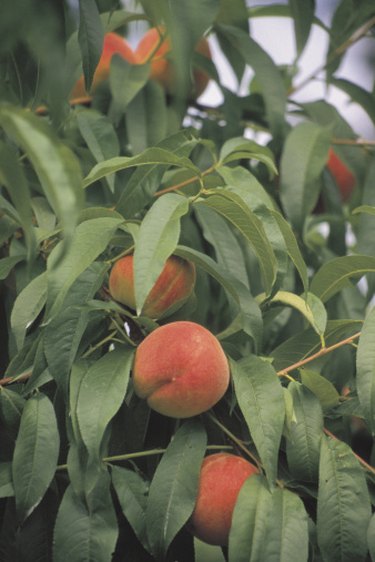
Dwarfed fruit trees take up much less space than standard trees in a dooryard orchard and are easier to care for and harvest. One of the simplest techniques of dwarfing a fruit tree is to use the open center method. In this method, judicious pruning practices limit the growth of the tree and also balance vegetative vigor with fruit production. Many varieties of fruit trees, including apples, pears, peaches, apricots, citrus and cherries, respond well to this method.
Step 1
Select a variety of fruit tree that is already a semi-dwarf or dwarf variety. Plant the tree in its permanent location and allow it to become established for one year. After a year, prune the main leader from the top of the fruit tree to around 30 inches tall.
Video of the Day
Step 2
Remove most of the branches, leaving only three or four strong, horizontally growing branches on the upper part of the tree. Allow these branches to grow for two full seasons to develop some length. During this time, remove any suckers or water sprouts that grow from the base of the tree or form on the trunk.
Step 3
Prune the ends of each horizontal branch on the tree to between 3 and 4 feet long. Allow the side spur branches along each main branch to develop. These branches will bear the fruit on the tree.
Step 4
Trim off the spurs of apple, pear or stone fruits, such as peaches, plums or cherries, to encourage regenerative growth, which will bear fruit the following season.
Step 5
Cut out any dead, diseased or unproductive branches, as needed. Thin spur and side branches from the main branches when the foliage of the tree becomes crowded and shade the tree excessively. This helps keep the tree small and under control.
Video of the Day